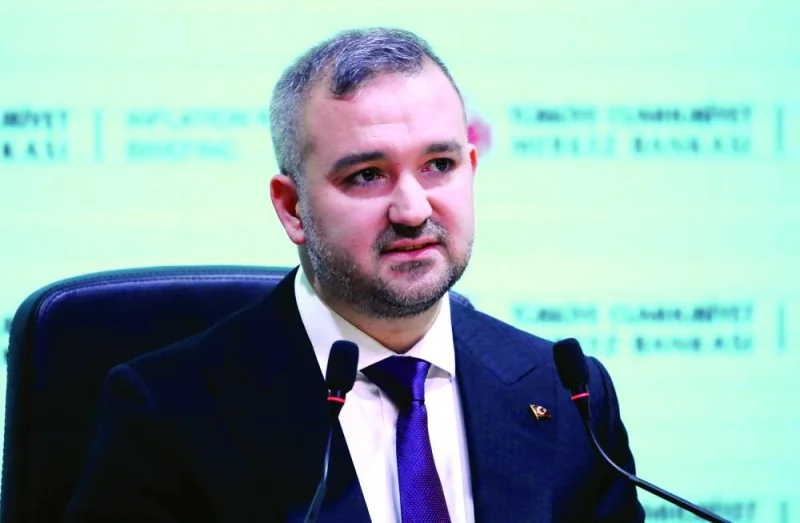Turkiye’s central bank lowered its key interest rate for a third straight time, days after inflation data showed a faster-than-expected pace of cooling.
The Monetary Policy Committee, led by Governor Fatih Karahan, cut the one-week repo rate to 42.5% from 45% on Thursday. The decision was in line with expectations, with almost all economists surveyed by Bloomberg pencilling in a 250 basis-point reduction.
The move comes after annual inflation eased to 39% in February, the lowest level in 20 months, supporting policymakers’ case for continued rate cuts. Core inflation — which excludes volatile items such as food and energy — remains elevated, and services inflation has proven stubbornly high.
In its statement, the MPC said the “underlying trend of inflation decreased in February” and noted that “services inflation slowed after January’s idiosyncratic increase.”
“Although domestic demand was above projections in the fourth quarter, it remained at disinflationary levels,” said the statement. The bank reiterated that the policy rate would be determined on “a meeting-by-meeting” basis with a focus on the inflation outlook, refraining from any explicit future guidance.
Still, it noted that domestic demand remains disinflationary in the first quarter, citing leading indicators. This phrase “opens the door for another rate cut in the April meeting,” said Tufan Comert, global markets strategy director at BBVA in London. The next meeting is scheduled for April 17.
Turkiye’s Borsa Istanbul Banks Index extended its drop to as much as 1.6% as of 2.37pm in Istanbul, though the index is still up by 5.5% this week. The lira was little changed at 36.43 per US dollar.
Hande Sekerci, head of research at Is Portfoy, said she expects another 2.5 percentage point cut in April, with the pace of cuts falling as of June.
The central bank’s emphasis on monitoring deposit rates is important in light of recent appetite for FX among savers, she added.
The central bank last month raised its year-end inflation outlook to 24%, from 21%, on the grounds that price pressures were coming from backward-indexed areas like education and rent, which officials said were outside the influence of monetary policy.
A challenge going forward is to convince Turks to continue saving in liras while rates fall. Foreign-exchange deposits increased by about $10bn last month, according to Goldman Sachs Group Inc economists. The lira has lost 3% against the dollar so far this year, the worst emerging-market performer after the Argentine peso.
“The Central Bank of the Republic of Turkiye’s third consecutive 250 basis-point cut supports our relatively dovish call for a policy rate of 25% by year-end. We also expect the central bank to support lower borrowing costs by easing macroprudential rules, especially in the second half of the year,” says Selva Bahar Baziki, economist, Bloomberg Economics.
Household and business-inflation expectations are higher than the central bank’s outlook and they’ve been described by policymakers as risks to the disinflation process. Anticipation of higher prices could lead consumers to bring forward spending just as the central bank is trying to cool off demand. While producer prices have eased much faster, economic activity driven by consumers has remained relatively strong.
“A quick look at the sectoral inflation expectations highlights the complex road ahead on the disinflation front,” Citigroup economists Ilker Domac and Gultekin Isiklar said. “Households and real sector expectations point to a slower disinflation process than envisaged by the authorities,” they added, expecting year-end inflation at 28%.

Turkish Central Bank Governor Fatih Karahan.
